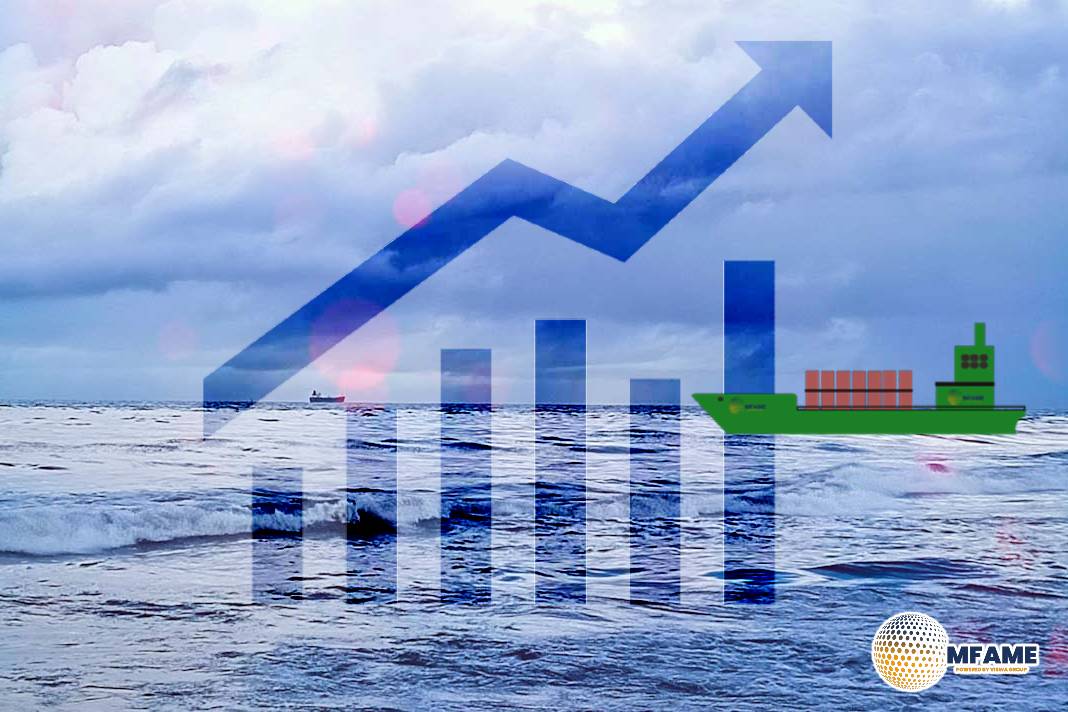The past month has not brought any stabilization to the container shipping market. From a demand perspective, data from Container Trade Statistics showed an uptick in demand growth as TEU*Miles globally grew 16% year-on-year. However, a large part of this seemingly high growth was due to a comparison with very poor performance a year prior. Compared to 2019, global demand in TEU *Miles is up a total of 7.3%, which is just 1.8% annual average growth and nowhere near sufficient to match capacity growth, reports Baltic Exchange.
Blank sailings
Carriers have been increasing their usage of blank sailings, but as the old saying goes, it was “too little, too late”. General Rate Increases were announced at the beginning of November and were initially partly successful. However, by the end of the month, they all but disappeared again, just confirming the weak status of the market.
During the past month, global container carriers were releasing their Q3 financial results and, as expected, they were essentially all hovering around break-even. Some still hung on to a small degree of profitability with others dropping below zero. It is clear that unless drastic changes happen, they will all be reporting a loss in Q4 2023.
Reliability for the full month of October saw no change with a global on-time performance remaining at a low 64% and average delays increasing further to almost five days for vessels that are delayed. This continuing poor performance should, to some degree, be seen as a result of the low freight rate environment, which gives carriers little to no incentive to spend extra fuel to get delayed vessels back on schedule.
Given the widening gap between global supply and demand owing to the delivery of a large orderbook, it is expected that carriers at some point will begin to idle vessels by closing down entire service loops. The most likely timeframe of this would be in late Q1 2024 following the Chinese New Year.
Most global carriers have announced surcharges for the upcoming EU carbon tax on shipping, also known as ETS. These vary across carriers with Asia to north Europe ranging from 24 EUR/FFE (Hapag Lloyd) to 70 EUR/FFE (Maersk). Realistically the carriers will find it challenging to effectively implement these surcharges if overcapacity continues to cause a depressed freight rate market. In that situation, the new surcharges will likely feature on the invoices – and hence appear to be effectively implemented – but at the same time, weak pricing power would further undermine base rate levels to placate cost-conscious shippers.
The sentiment across many shippers in the market has changed recently compared to the past few years in the sense that resilience and robustness in the supply chain have given way to a – more traditional – focus on price as the key parameter.
This sentiment is also reflected in the shippers’ willingness to pay when it comes to decarbonization. Much as the container carriers focus on lowering their carbon footprint, it is also clear that only a very small fraction of shippers are willing to pay extra for such improvements.
The drive towards market consolidation, especially as it pertains to regional carriers, continues with the largest step in the recent month seen with Abu Dhabi Ports making a bid for Indonesian carrier Meratus.
Did you subscribe to our daily Newsletter?
It’s Free! Click here to Subscribe
Source: Baltic Exchange






















